Meng Gao
Learning Smooth and Expressive Interatomic Potentials for Physical Property Prediction
Feb 17, 2025



Abstract:Machine learning interatomic potentials (MLIPs) have become increasingly effective at approximating quantum mechanical calculations at a fraction of the computational cost. However, lower errors on held out test sets do not always translate to improved results on downstream physical property prediction tasks. In this paper, we propose testing MLIPs on their practical ability to conserve energy during molecular dynamic simulations. If passed, improved correlations are found between test errors and their performance on physical property prediction tasks. We identify choices which may lead to models failing this test, and use these observations to improve upon highly-expressive models. The resulting model, eSEN, provides state-of-the-art results on a range of physical property prediction tasks, including materials stability prediction, thermal conductivity prediction, and phonon calculations.
Open Materials 2024 (OMat24) Inorganic Materials Dataset and Models
Oct 16, 2024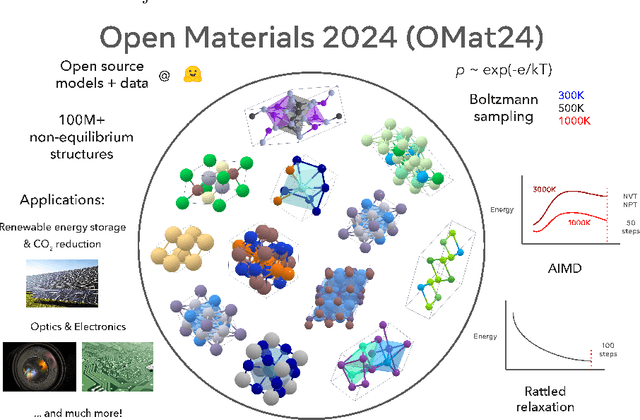
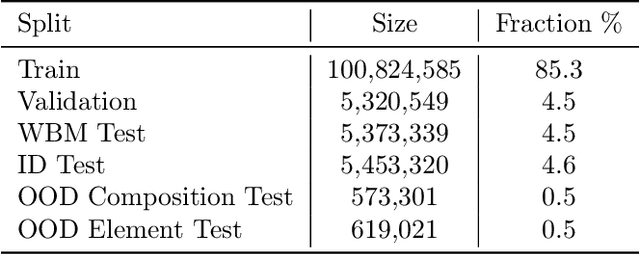
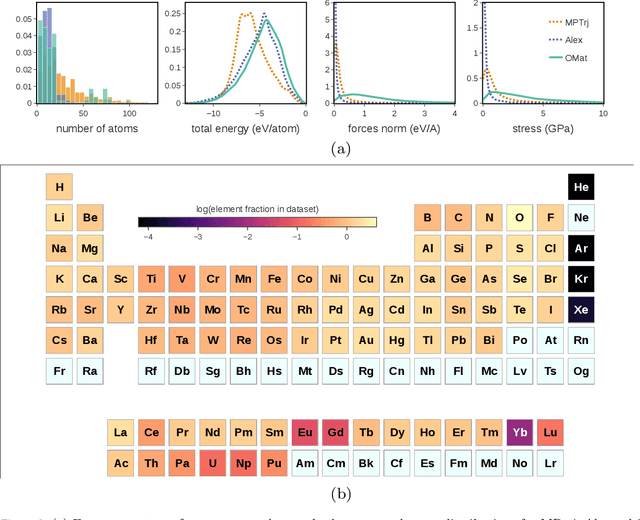

Abstract:The ability to discover new materials with desirable properties is critical for numerous applications from helping mitigate climate change to advances in next generation computing hardware. AI has the potential to accelerate materials discovery and design by more effectively exploring the chemical space compared to other computational methods or by trial-and-error. While substantial progress has been made on AI for materials data, benchmarks, and models, a barrier that has emerged is the lack of publicly available training data and open pre-trained models. To address this, we present a Meta FAIR release of the Open Materials 2024 (OMat24) large-scale open dataset and an accompanying set of pre-trained models. OMat24 contains over 110 million density functional theory (DFT) calculations focused on structural and compositional diversity. Our EquiformerV2 models achieve state-of-the-art performance on the Matbench Discovery leaderboard and are capable of predicting ground-state stability and formation energies to an F1 score above 0.9 and an accuracy of 20 meV/atom, respectively. We explore the impact of model size, auxiliary denoising objectives, and fine-tuning on performance across a range of datasets including OMat24, MPtraj, and Alexandria. The open release of the OMat24 dataset and models enables the research community to build upon our efforts and drive further advancements in AI-assisted materials science.
Caching Content Placement and Beamforming Co-design for IRS-Aided MIMO Systems with Imperfect CSI
Oct 14, 2024Abstract:When offloading links encounter deep fading and obstruction, edge caching cannot fully enhance wireless network performance and improve the QoS of edge nodes, as it fails to effectively reduce backhaul burden. The emerging technology of intelligent reflecting surfaces (IRS) compensates for this disadvantage by creating a smart and reconfigurable wireless environment. Subsequently, we jointly design content placement and active/passive beamforming to minimize network costs under imperfect channel state information (CSI) in the IRS-oriented edge caching system. This minimization problem is decomposed into two subproblems. The content placement subproblem is addressed by applying KKT optimality conditions. We then develop the alternating optimization method to resolve precoder and reflection beamforming. Specifically, we reduce transmission power by first fixing the phase shift, reducing the problem to a convex one relative to the precoder, which is solved through convex optimization. Next, we fix the precoder and resolve the resulting reflection beamforming problem using the penalty convex-concave procedure (CCP) method. Results demonstrate that our proposed method outperforms uniform caching and random phase approaches in reducing transmission power and saving network costs. Eventually, the proposed approach offers potential improvements in the caching optimization and transmission robustness of wireless communication with imperfect CSI.
Long-lead forecasts of wintertime air stagnation index in southern China using oceanic memory effects
May 16, 2023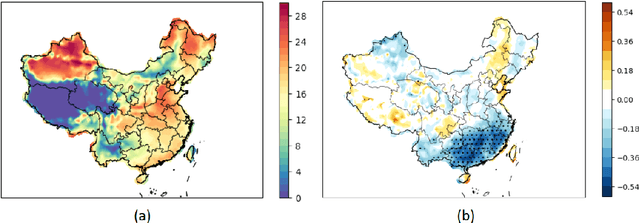
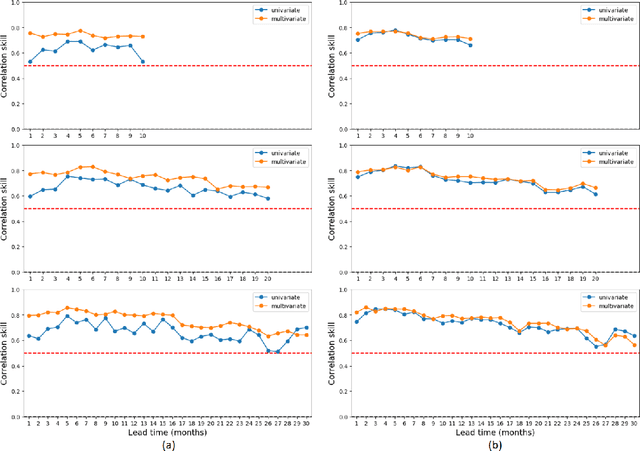
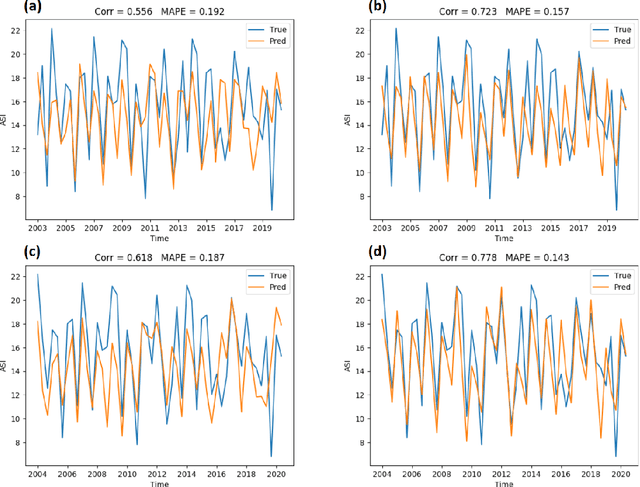
Abstract:Stagnant weather condition is one of the major contributors to air pollution as it is favorable for the formation and accumulation of pollutants. To measure the atmosphere's ability to dilute air pollutants, Air Stagnation Index (ASI) has been introduced as an important meteorological index. Therefore, making long-lead ASI forecasts is vital to make plans in advance for air quality management. In this study, we found that autumn Ni\~no indices derived from sea surface temperature (SST) anomalies show a negative correlation with wintertime ASI in southern China, offering prospects for a prewinter forecast. We developed an LSTM-based model to predict the future wintertime ASI. Results demonstrated that multivariate inputs (past ASI and Ni\~no indices) achieve better forecast performance than univariate input (only past ASI). The model achieves a correlation coefficient of 0.778 between the actual and predicted ASI, exhibiting a high degree of consistency.
Exploring Semantic Relationships for Unpaired Image Captioning
Jun 20, 2021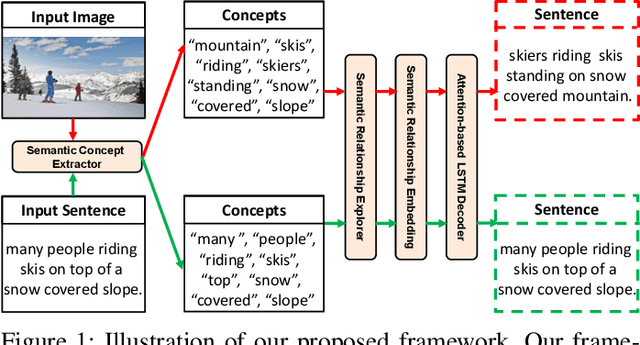

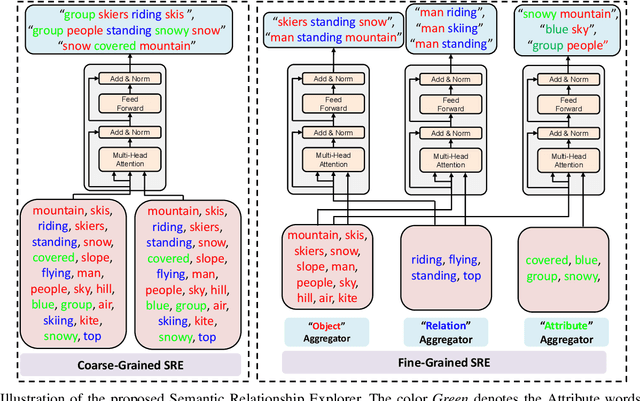
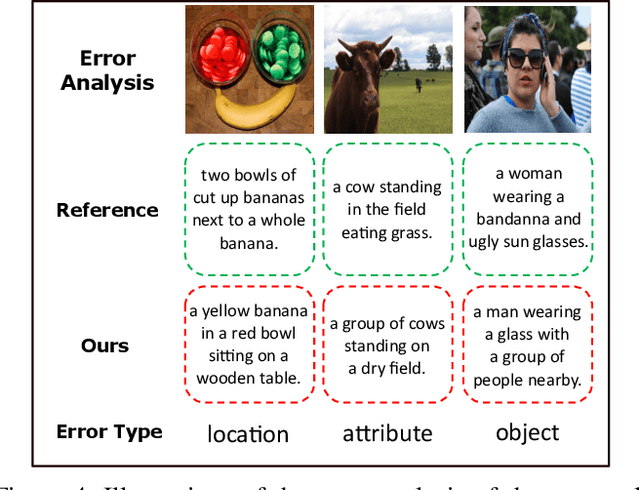
Abstract:Recently, image captioning has aroused great interest in both academic and industrial worlds. Most existing systems are built upon large-scale datasets consisting of image-sentence pairs, which, however, are time-consuming to construct. In addition, even for the most advanced image captioning systems, it is still difficult to realize deep image understanding. In this work, we achieve unpaired image captioning by bridging the vision and the language domains with high-level semantic information. The motivation stems from the fact that the semantic concepts with the same modality can be extracted from both images and descriptions. To further improve the quality of captions generated by the model, we propose the Semantic Relationship Explorer, which explores the relationships between semantic concepts for better understanding of the image. Extensive experiments on MSCOCO dataset show that we can generate desirable captions without paired datasets. Furthermore, the proposed approach boosts five strong baselines under the paired setting, where the most significant improvement in CIDEr score reaches 8%, demonstrating that it is effective and generalizes well to a wide range of models.
 Add to Chrome
Add to Chrome Add to Firefox
Add to Firefox Add to Edge
Add to Edge